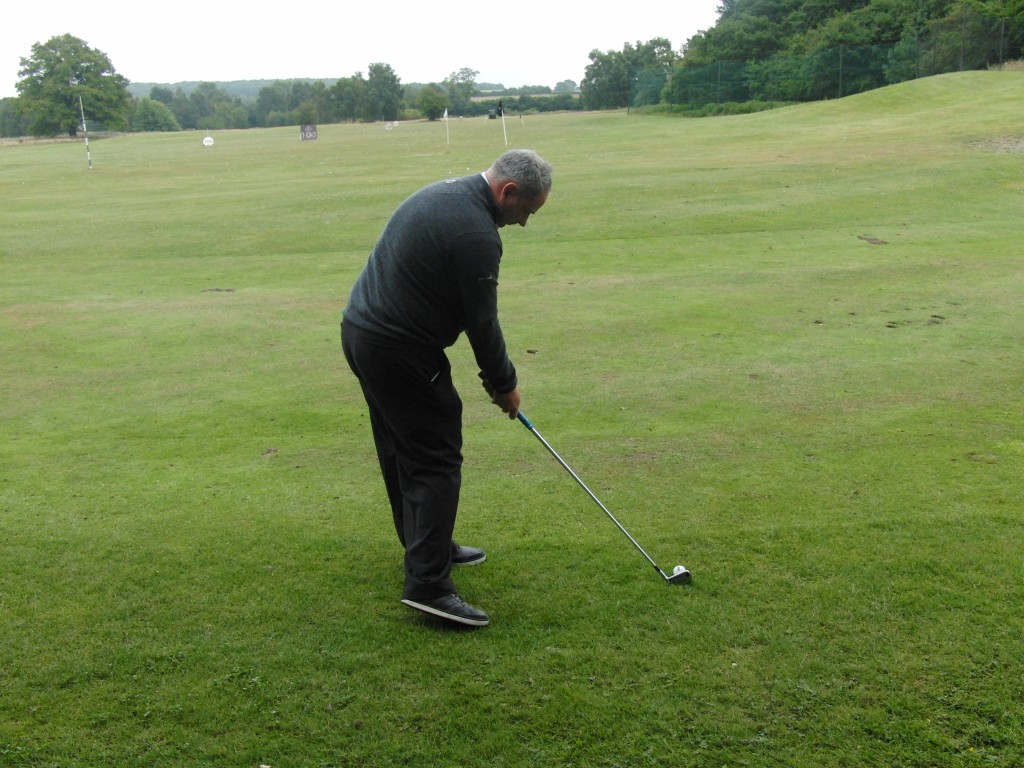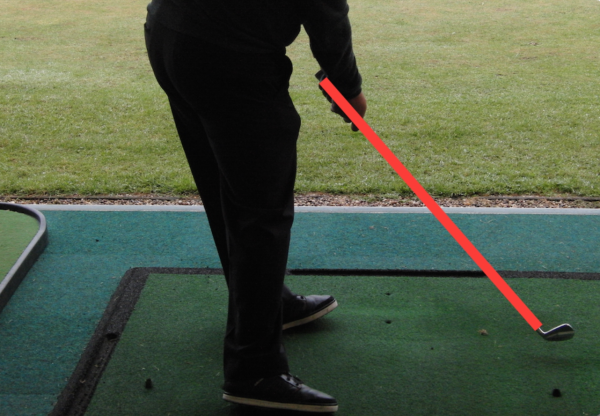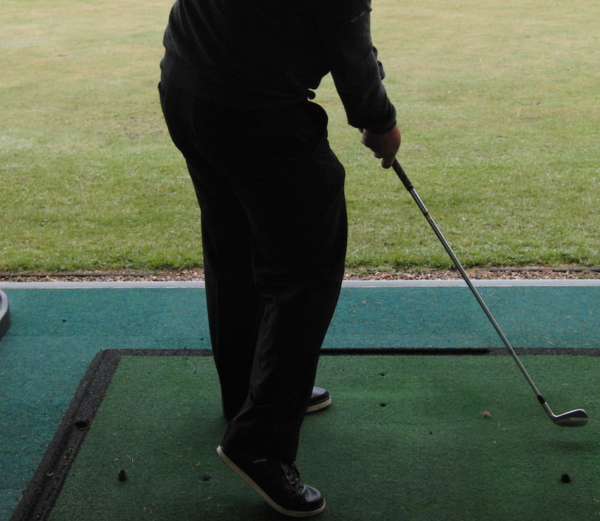Instruction
Do you have correct foot action?

What is correct foot action, and is there such a thing?
I have a preference for how the feet should work in the golf swing in order to minimize the amount of hand manipulation that is needed through impact. It is key to have hand action, but I definitely would like to avoid hand manipulation or what is called “saving it with the hands.”
There are many top players who wouldn’t adhere to my “perfect” action, but they are extremely successful. These are highly skilled individuals who have extremely educated hands. A change would only be made to these players after careful observation. Their shot pattern would need to be studied and I would need to observe if it broke down too often under pressure. I would also be looking at it from an injury point of view. Injury prevention is a must if we believe it may occur.
So what do I like to see? In an ideal world, the feet should roll, then rotate, as this creates a more linear direction of the center of pressure movement and in turn makes the hips pivot better. The added effect is that the shaft is presented in a lower position and the hands can travel on an arc or plane closer to their original position. The hands are now working in a more connected position and it means that the horizontal hinging of the wrists is not needed to produce the desired outcome.
The correct foot action

I think that with all golf technique it is key not to have one way of doing anything, but to have many ways and to try to understand the positives and negatives of any pattern of movement.
Early Extension
My observations are that the foot action also can lead to early extension in the downswing. This happens when the weight moves to the toe area of the feet too much and early in downswing, or even in the transition. This causes the hips to extend and move toward the ball, once again, promoting hand manipulation rather than hand action.
See the photo of the incorrect foot action below.
Incorrect Foot Action
 Foot Roll
Foot Roll
The correct foot action allows the right foot to roll inward or pronate before it lifts into the air as pictured above. The best way to practice this is with dry drills at home, working at a pace that allows you to make the correct movement. When successful, increase the speed and try to copy the photo of my correct foot action.
- LIKE49
- LEGIT7
- WOW1
- LOL1
- IDHT2
- FLOP4
- OB2
- SHANK21
Instruction
Clement: Laid-off or perfect fade? Across-the-line or perfect draw?

Some call the image on the left laid off, but if you are hitting a fade, this could be a perfect backswing for it! Same for across the line for a draw! Stop racking your brain with perceived mistakes and simply match backswing to shot shape!
- LIKE0
- LEGIT0
- WOW0
- LOL0
- IDHT0
- FLOP0
- OB0
- SHANK1
Instruction
The Wedge Guy: The easiest-to-learn golf basic

My golf learning began with this simple fact – if you don’t have a fundamentally sound hold on the golf club, it is practically impossible for your body to execute a fundamentally sound golf swing. I’m still a big believer that the golf swing is much easier to execute if you begin with the proper hold on the club.
As you might imagine, I come into contact with hundreds of golfers of all skill levels. And it is very rare to see a good player with a bad hold on the golf club. There are some exceptions, for sure, but they are very few and very far between, and they typically have beat so many balls with their poor grip that they’ve found a way to work around it.
The reality of biophysics is that the body moves only in certain ways – and the particulars of the way you hold the golf club can totally prevent a sound swing motion that allows the club to release properly through the impact zone. The wonderful thing is that anyone can learn how to put a fundamentally sound hold on the golf club, and you can practice it anywhere your hands are not otherwise engaged, like watching TV or just sitting and relaxing.
Whether you prefer an overlap, interlock or full-finger (not baseball!) grip on the club, the same fundamentals apply. Here are the major grip faults I see most often, in the order of the frequency:
Mis-aligned hands
By this I mean that the palms of the two hands are not parallel to each other. Too many golfers have a weak left hand and strong right, or vice versa. The easiest way to learn how to hold the club with your palms aligned properly is to grip a plain wooden ruler or yardstick. It forces the hands to align properly and shows you how that feels. If you grip and re-grip a yardstick several times, then grip a club, you’ll see that the learning curve is almost immediate.
The position of the grip in the upper/left hand
I also observe many golfers who have the butt of the grip too far into the heel pad of the upper hand (the left hand for right-handed players). It’s amazing how much easier it is to release the club through the ball if even 1/4-1/2″ of the butt is beyond the left heel pad. Try this yourself to see what I mean. Swing the club freely with just your left hand and notice the difference in its release from when you hold it at the end of the grip, versus gripping down even a half inch.
To help you really understand how this works, go to the range and hit shots with your five-iron gripped down a full inch to make the club the same length as your seven-iron. You will probably see an amazing shot shape difference, and likely not see as much distance loss as you would expect.
Too much lower (right) hand on the club
It seems like almost all golfers of 8-10 handicap or higher have the club too far into the palm of the lower hand, because that feels “good” if you are trying to control the path of the clubhead to the ball. But the golf swing is not an effort to hit at the ball – it is a swing of the club. The proper hold on the club has the grip underneath the pad at the base of the fingers. This will likely feel “weak” to you — like you cannot control the club like that. EXACTLY. You should not be trying to control the club with your lower/master hand.
Gripping too tightly
Nearly all golfers hold the club too tightly, which tenses up the forearms and prevents a proper release of the club through impact. In order for the club to move back and through properly, you must feel that the club is controlled by the last three fingers of the upper hand, and the middle two fingers of the lower hand. If you engage your thumbs and forefingers in “holding” the club, the result will almost always be a grip that is too tight. Try this for yourself. Hold the club in your upper hand only, and squeeze firmly with just the last three fingers, with the forefinger and thumb off the club entirely. You have good control, but your forearms are not tense. Then begin to squeeze down with your thumb and forefinger and observe the tensing of the entire forearm. This is the way we are made, so the key to preventing tenseness in the arms is to hold the club very lightly with the “pinchers” — the thumbs and forefingers.
So, those are what I believe are the four fundamentals of a good grip. Anyone can learn them in their home or office very quickly. There is no easier way to improve your ball striking consistency and add distance than giving more attention to the way you hold the golf club.
More from the Wedge Guy
- The Wedge Guy: Golf mastery begins with your wedge game
- The Wedge Guy: Why golf is 20 times harder than brain surgery
- The Wedge Guy: Musings on the golf ball rollback
- LIKE88
- LEGIT14
- WOW6
- LOL1
- IDHT0
- FLOP4
- OB1
- SHANK8
Instruction
Clement: Stop ripping off your swing with this drill!

Not the dreaded headcover under the armpit drill! As if your body is defective and can’t function by itself! Have you seen how incredible the human machine is with all the incredible feats of agility all kinds of athletes are accomplishing? You think your body is so defective (the good Lord is laughing his head off at you) that it needs a headcover tucked under the armpit so you can swing like T-Rex?
- LIKE0
- LEGIT2
- WOW2
- LOL0
- IDHT0
- FLOP0
- OB0
- SHANK2
-

 19th Hole3 weeks ago
19th Hole3 weeks agoDave Portnoy places monstrous outright bet for the 2024 Masters
-

 19th Hole1 week ago
19th Hole1 week agoJustin Thomas on the equipment choice of Scottie Scheffler that he thinks is ‘weird’
-

 19th Hole1 week ago
19th Hole1 week ago‘Absolutely crazy’ – Major champ lays into Patrick Cantlay over his decision on final hole of RBC Heritage
-

 19th Hole2 weeks ago
19th Hole2 weeks agoTwo star names reportedly blanked Jon Rahm all week at the Masters
-

 19th Hole2 weeks ago
19th Hole2 weeks agoReport: LIV Golf identifies latest star name they hope to sign to breakaway tour
-

 19th Hole2 weeks ago
19th Hole2 weeks agoNeal Shipley presser ends in awkward fashion after reporter claims Tiger handed him note on 8th fairway
-

 19th Hole2 weeks ago
19th Hole2 weeks agoBrandel Chamblee has ‘no doubt’ who started the McIlroy/LIV rumor and why
-

 Equipment3 weeks ago
Equipment3 weeks agoWhat we know about Bryson DeChambeau’s 3D-printed Avoda irons

















JP
Aug 12, 2015 at 1:23 am
I have to disagree. If you look at 14 of 17 multiple major winners they all lift their left heel and their right heel. From the back it’s look like a “marching move”. Particularly, all the biggest straight hitters (jack, gary, greg). It allows your hips to swivel and easily transfer your weight without swaying. Since I’ve been doing this I have no back pain and added distance and accuracy. The footwork recommended above clearly looks like you need good timing and leads to obvious ITBS issues or worse, goat humping through loss of spine angle.
Jang Hyung-sun
Jul 17, 2015 at 9:50 am
This same foot action is explained in Chapter 5 of Golf My Way, Jack Nicklaus.
Seamus McEnery
Jul 17, 2015 at 2:55 am
Hi Alastair,
A very interesting article on the correct footwork.
As a very keen golfer since my early teens, now 40 years, I have struggled with Achilles’ tendon and low back issues. I have learned over the years that the root cause of my issues stemmed from poor foot work, particularly at impact, which you highlight above.
In picture 2 above, your right big toe MPT joint is crushed. This is what I use to do. This continuous spraining of the big toe joint leads to a condition called hallux rigidus of the MPT ( big toe) joint and this effects ones gait.
Furthermore, in picture 2, it is clear that the right ribs are closer to the right hip at impact. This applies massive loading on the right side of the lumbar spine and leads to overloading of the right lumbar spine and eventually slipped discs.
I have a file put together of the the senior tour golfers who have had long careers eg Bernhard Langer and Tom Watson and the evidence suggests that both of their leg work since their halcyon days to now was closer to picture 2 at impact and even more so as they got older. In total contrast is Tiger Woods who is most definitely a picture 1 impact position ( & myself) golfer throughout his career and this leads to big toe, Achilles tendon, knee and low back issues. I note Paul Casey has suffered too from ‘turf toe’ and he falls into picture 1 impact position too.
In conclusion based on the evidence the picture 2 impact position is the least injury prone position in my humble opinion for a long golfing career. Juniors pay heed or is it coaches?
There should be more articles about foot work in the golf swing.
Kind regards,
Seamus McEnery
Ireland.
Scott
Jul 17, 2015 at 4:48 pm
Seamus, I am not sure that your explanations go with the correct pictures. There are 3 pictures. One the header, two titled “correct foot position” and three titled “incorrect foot position”. You reference 2 crushing a joint and then say 2 is the correct position. Which one do you feel is correct?
Seamus McEnery
Jul 18, 2015 at 4:14 am
Hi Scott,
Thanks for pointing out my error.
The header photo and the correct foot position photo I believe are correct. I would call them the Langer & Watson feet impact positions and we know they both had long careers.
The ” crushed big toe” incorrect impact position is what I refer to as the Tiger Woods and Paul Casey impact positions. This would be picture 3 under the title incorrect foot action.
In a nutshell if the feet are level at impact then the knees are, then the hips are and so forth thereby reducing the lumbar shear on the lower back and other joints.
I have a file put together on most of today’s top tour players foot work and Rory McIlroy alternates between a flat right root at driver impact to slightly raised but nothing close to where Tiger was. Justin Rose has level foot work too at impact.
I suppose the hard lesson is, if you want a long golfing career it’s imperative to have the correct foot action.
Seamus.
Seamus McEnery
Jul 18, 2015 at 4:53 pm
Hi Scott,
Sorry about my mixing up the photos.
The ‘incorrect foot action’ photo above is what leads to spraining the big toe ( MPT) joint. This is what I did and it led to multiple injuries as a direct result of the toe getting damaged.
Basically the higher the right heel is off the ground at impact, particularly with the driver the greater the lumbar shear on the lower back and potential to destroy your back and big toe joint. Take it from me both injuries are very painful.
A flatter right foot at impact or the ‘correct foot action ‘ photo above is the safest / healthiest way to swing a golf club for sure.
I actually have a full rigid orthotic made for my right foot ( from heal to toes) that doesn’t allow the toe joint to bend at all during the downswing and it forces me into rotating left and downward into the back of the ball with both feet even on the ground. It’s easier / safer to practice with and believe it or not creates a very powerful hit.
Seamus.
other paul
Jul 16, 2015 at 9:31 pm
I assumed that if the pelvis moved correctly then the feet would follow because they would have to. I have found that if I put my hips in IR at the top of my downswing and then put them into ER during my transition then my feet did their own thing and I never had to think about them. Also rotation went way up and so did my swing speed.
Jack
Jul 16, 2015 at 11:37 pm
What’s ER and IR?
other paul
Jul 17, 2015 at 11:24 pm
external rotation and internal rotation